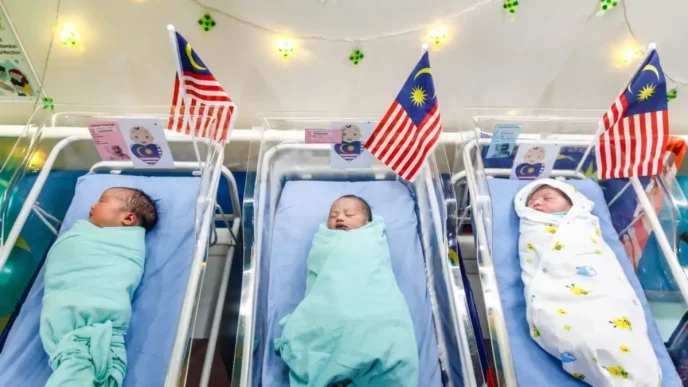In the cockpit of a Scoot Airbus A320, Captain Vanessa Khaw gazes out at the same breathtaking sunrises that first inspired her to trade her flight attendant tray for a pilot’s uniform two decades ago. Today, as one of Singapore’s growing but still small cohort of female pilots, she navigates regional skies and the persistent challenges of a male-dominated industry. Her story, alongside that of Senior First Officer (SFO) Lim Wen Shan, reflects a slow but steady shift in Singapore’s aviation sector, where women are carving out space at the controls despite systemic barriers and cultural misconceptions.
Capt Khaw, now a 41-year-old pilot with 15 years of experience at Singapore Airlines’ budget arm Scoot, embodies determination. Starting as a flight attendant in 2004, she was captivated by the view from the flight deck while delivering meals to pilots. That awe fuelled her ambition to fly, leading her to fund her own commercial pilot training at a six-figure cost, supplemented by family loans. Despite initial rejection from multiple airlines and familial doubts—her relatives warned her that piloting was “a job for men”—she persevered, joining Tigerair (now merged with Scoot) in 2010. Today, she balances her role as a captain and flight instructor with motherhood, returning home daily from turnaround flights to her two daughters, aged seven and nine, who dream of following in her footsteps.
Her journey is not solitary. SFO Lim Wen Shan, 45, transitioned from a 14-year stint in the Republic of Singapore Air Force (RSAF), where she flew C-130 transport aircraft, to commercial aviation with Jetstar Asia in 2019. Driven by a desire to extend her flying career beyond the RSAF’s retirement age of 50, she self-funded a $60,000 licence conversion in the United States while still in service. Now piloting Airbus A320s, she recently shared a poignant moment with her mother, inviting her into the cockpit during a flight to Wuxi, China—a privilege unimaginable in her military days.
Yet, despite these personal triumphs, female pilots remain a rarity in Singapore. According to the SIA Group’s latest Sustainability Report (April 2023 to March 2024), women constitute just 1.9% of its 3,245 pilots across SIA and Scoot, a marginal increase from 1.6% the previous year. This figure lags far behind global benchmarks, such as India, where 14.4% of pilots are women, or Qantas in Australia, with 7.5%. At Jetstar Asia, the proportion is similarly low at around 2%.
Cultural and Structural Hurdles
The underrepresentation of women in Singapore’s aviation industry stems from a mix of cultural perceptions and structural challenges. Mabel Kwan, vice-president of the Singapore chapter of Women in Aviation, points to a lack of awareness among young women about piloting as a viable career. Many are unaware of the pathways to becoming a pilot or harbour misconceptions about the job’s dangers and lack of work-life balance. “Some think you’re always away from home, which isn’t necessarily true with regional flights,” she explains. Capt Khaw’s ability to return daily to her family challenges this stereotype directly.
Access to training poses another barrier. Singapore’s limited airspace restricts local flight training opportunities, often requiring aspiring pilots to train abroad in countries like Australia or the US, as Capt Khaw did with her private pilot lessons in Johor Bahru. The high cost of training—often in the six-figure range—can be prohibitive without sponsorship from airlines or the military. SFO Lim notes that while military pilots like herself benefit from prior experience, civilians starting from scratch face a steeper financial climb, especially women who may lack encouragement to enter such fields.
Historically, opportunities were even scarcer. When SFO Lim began her career in 2005, budget airlines had no openings, and SIA did not accept female cadet pilots—a policy that changed only in 2016. While progress is evident, with more women joining RSAF batches and airlines like Scoot fostering all-women pilot chat groups for support, the pace remains slow. Capt Khaw recalls the surprise of her male colleagues when she first entered the cockpit, a reaction that has dulled over time but underscores the novelty of her presence even a decade ago.
Inspiring the Next Generation
Both pilots highlight the importance of visibility and role models in changing perceptions. Capt Khaw credits pioneers like Capt Vanessa Ess, who in 2001 became the first woman in SilkAir’s cadet pilot programme, for showing her that such a career was “actually possible.” On International Women’s Day this year, Capt Khaw operated a flight from Singapore to Chiang Mai with an all-female team, from pilots to ground staff—a symbolic gesture of progress. Passengers, she notes, often express delight at seeing a female captain, some even requesting photos after safe landings.
SFO Lim, too, sees hope in increased access to information through social media and public outreach, which can demystify aviation careers for younger women. Her own story of taking her mother on a commercial flight illustrates the personal milestones that can inspire others. “It’s about showing that this isn’t just a man’s world,” she says.
Advocates like Ms Kwan call for collaborative efforts between airlines, training programmes, and awareness campaigns to spotlight successful female pilots. Such initiatives could address misconceptions and highlight diverse pathways into the profession, whether through military service, cadet programmes, or independent training schools now offering local ground preparation.
Looking Ahead
For Capt Khaw, the journey doesn’t end with her current achievements. She aspires to pilot wide-body aircraft like the Boeing 787, which can traverse greater distances, symbolising not just a professional leap but a broader breaking of ceilings. Her daughters’ aspirations to become pilots suggest a generational shift, one where the cockpit might no longer be seen as an anomaly for women.
Singapore’s aviation industry stands at a crossroads. While female pilots like Capt Khaw and SFO Lim are proving their mettle, their numbers remain a fraction of the workforce. Addressing structural barriers—cost, access to training, and limited local opportunities—alongside cultural shifts through mentorship and visibility, could accelerate change. For now, each flight these women command is a quiet rebellion against outdated norms, charting a course for others to follow.














